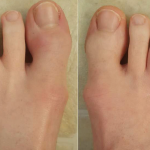 Guselkumab treatment inhibits disease activity and improves axial symptoms in adults with active psoriatic arthritis (PsA) through two years, according to data presented by Philip J. Mease, MD, at the American Academy of Dermatology’s Virtual Meeting Experience 2021, held April 23–25. In this study, patients with moderate to severe plaque psoriasis also experienced complete skin clearance.1
Guselkumab treatment inhibits disease activity and improves axial symptoms in adults with active psoriatic arthritis (PsA) through two years, according to data presented by Philip J. Mease, MD, at the American Academy of Dermatology’s Virtual Meeting Experience 2021, held April 23–25. In this study, patients with moderate to severe plaque psoriasis also experienced complete skin clearance.1
The DISCOVER-2 study (NCT03158285) was a randomized, double-blind, multicenter, phase 3 trial that evaluated the efficacy and safety of guselkumab for two years in patients with active PsA who were biologic naive (n=739). The study included a six-week screening phase followed by a blinded, active treatment phase of approximately 100 weeks, which was divided into a placebo-controlled period from week 0 to week 24 and an active treatment period from weeks 24–100.2
Patients were randomized to receive 100 mg of guselkumab either every four or eight weeks for two years, or to receive 24 weeks of placebo with crossover to guselkumab every four weeks at week 24 through two years. A safety follow-up phase occurred 12 weeks after the last administration of guselkumab.
Findings
The researchers found patients with active PsA taking guselkumab demonstrated continued skin clearance and joint symptom relief, with no new safety signals after two years (112 weeks), results that had manifested both at 24 weeks and one year. Treatment efficacy, related to physical function and physical aspects of health-related quality of life, was originally demonstrated at week 24 and continued through week 100.
The results showed 56% of patients who received guselkumab every four weeks and 55% of patients who received guselkumab every eight weeks achieved at least a 50% improvement in ACR score.
Additionally, a statistically significant inhibition of radiographic progression of joint damage as measured by the modified van der Heijde-Sharp score for PsA was seen at week 24 in patients who received guselkumab every four weeks. Change in total modified van der Heijde- Sharp score for PsA score is defined by a change of score from baseline. This score combines erosion and joint space narrowing scores derived from joint radiographs of the hands and feet. (Note: Guselkumab is not currently approved in the U.S. as a treatment to inhibit structural damage.)
Patients who received guselkumab every eight weeks had less radiographic progression of joint damage than patients who received placebo, but that result was not statistically significant. From weeks 52–100, low rates of radiographic progression of joint damage were seen in patients treated with guselkumab. In the patients who originally received placebo and crossed into the guselkumab-treatment group at week 24, improvements in radiographic progression of joint damage were seen through year two.
No new safety signals were observed in the analysis.
Michele B. Kaufman, PharmD, BCGP, is a freelance medical writer based in New York City and a pharmacist at New York Presbyterian Lower Manhattan Hospital.
References
- Janssen Pharmaceutical Companies of Johnson & Johnson. News release: New phase 3 data showed first-in-class Tremfya (guselkumab) provided durable complete skin clearance through five years in moderate to severe plaque psoriasis (PsO) and robust joint symptom improvement through 52 weeks in active psoriatic arthritis (PsA). 2021 March 16.
- McInnes IB, Rahman P, Gottlieb AB, et al. Efficacy and safety of guselkumab, a monoclonal antibody specific to the p19-subunit of interleukin 23, through 2 years: Results from a phase 3, randomized, double-blind, placebo-controlled study conducted in biologic-naïve patients with active psoriatic arthritis [abstract]. The Innovations in Dermatology: Virtual Spring Conference. 2021 Mar 16–20.



